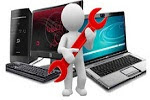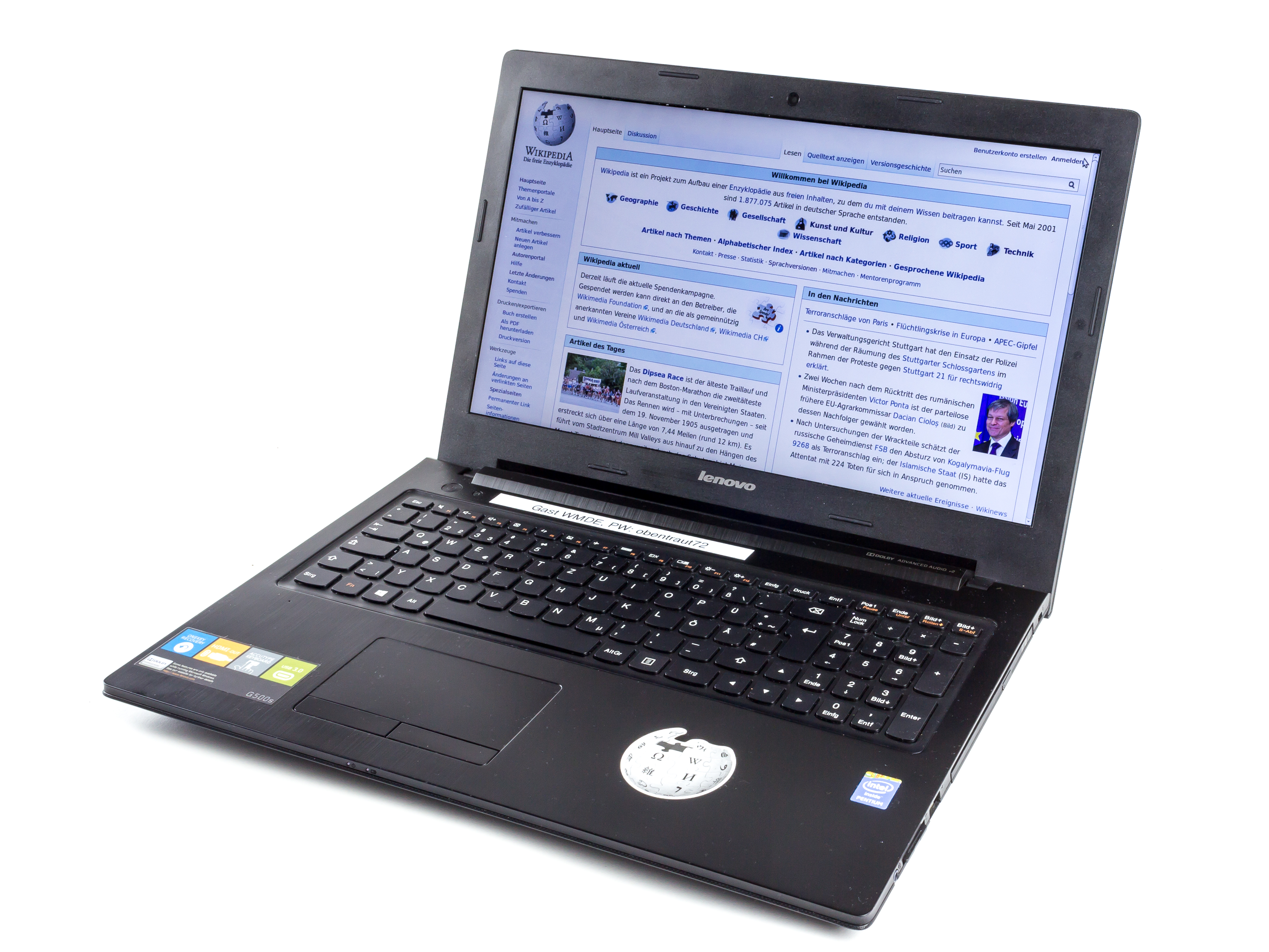History of Laptop Invention
A laptop is Portable and compact personal computer with the same capabilities as a desktop computer
A laptop also called a notebook computer or simply
a notebook, is a small, portable personal computer with a
"clamshell" form factor, having, typically, a
thin LCD or LED computer screen mounted on the inside
of the upper lid of the "clamshell" and an alphanumeric
keyboard on the inside of the lower lid. The "clamshell" is
opened up to use the computer.
A laptop is a computer designed for portability. Laptops are
usually less than 3 inches thick, weigh less than 5 pounds and can be powered
by a battery. As such laptops are designed for low power consumption and are
most often used when space is limited, such as on an airplane.
A laptop computer, sometimes called a notebook computer by
manufacturers, is a battery- or AC-powered personal computer generally smaller
than a briefcase that can easily be transported and conveniently used in
temporary spaces such as on airplanes, in libraries, temporary offices, and at
meetings.
A laptop folded shut for transportation, and thus are suitable
for mobile use.Its name comes from "lap", as it was deemed to be
placed for use on a person's lap. Although originally there was a distinction
between laptops and notebooks, the former being bigger and heavier than the
latter, as of 2014, there is often no longer any difference.Laptops are
commonly used in a variety of settings, such as at work, in education, in
playing games, Internet surfing, for personal multimedia and general home
computer use.
A laptop combine the components, inputs, outputs, and capabilities of a desktop
computer, including the display screen, small speakers,
a keyboard, hard disk drive, optical disc drive, pointing
devices (such as a touchpad or trackpad), a processor,
and memory into a single unit. Most modern laptops feature
integrated webcams and built-in microphones, while many also
have touchscreens.
A laptop can be powered either from an internal battery or by an
external power supply from an AC adapter. Hardware
specifications, such as the processor speed and memory capacity, significantly
vary between different types, makes, models and price points.
History of Laptops
The portable
micro computer Portal of the French company R2E Micral CCMC
officially appeared in September 1980 at the Sicob show in Paris. It was a
portable microcomputer designed and marketed by the studies and developments
department of R2E Micral at the request of company CCMC specializing
in payroll and accounting.
It was based on an Intel 8085
processor, 8-bit, clocked at 2 MHz. It was equipped with a central 64 KB
RAM, a keyboard with 58 alpha numeric keys and 11 numeric keys ( separate
blocks ), a 32-character screen, a floppy disk : capacity = 140 00 characters,
of a thermal printer : speed = 28 characters / second, an asynchronous
channel, a synchronous channel, a 220 V power supply. It weighed 12 kg and
its dimensions were 45 x 45 x 15 cm. It provided total mobility. Its
operating system was the aptly named Prologue.
As 8-bit CPU machines became widely
accepted, the number of portables increased rapidly. The first laptop-sized
notebook computer was the Epson HX-20, invented (patented)
by Suwa Seikosha's Yukio Yokozawa in July 1980,introduced at the COMDEX computer
show in Las Vegas by Japanese company Seiko Epson in
1981,and widely released in 1982.It had an LCD screen, a rechargeable
battery, and a calculator-size printer, in a 1.6 kg (3.5 lb) chassis,
the size of an A4 notebook.
It was described as a "laptop"
and "notebook" computer in its patent.As the personal
computer (PC) became feasible in 1971, the idea of a portable personal
computer soon followed. A "personal, portable information
manipulator" was imagined by Alan Kay at Xerox PARC in
1968, and described in his 1972 paper as the
"Dynabook".
The IBM Special Computer APL Machine Portable
(SCAMP) was demonstrated in 1973. This prototype was based on the IBM PALM
processor.The IBM 5100, the first commercially available portable computer,
appeared in September 1975, and was based on the SCAMP prototype.
From 1983 onward, several new input
techniques were developed and included in laptops, including
the touchpad (Gavilan SC, 1983), the pointing
stick (IBM ThinkPad 700, 1992), and handwriting recognition
(Linus Write-Top,1987). Some CPUs, such as the 1990 Intel i386SL, were
designed to use minimum power to increase battery life of portable computers
and were supported by dynamic power management features such as Intel SpeedStep and
AMD Power Now! in some designs.
The Osborne 1, released in 1981,
was a luggable computer that used the Zilog Z80 and weighed 24.5
pounds (11.1 kg).It had no battery, a 5 in (13 cm) cathode
ray tube (CRT) screen, and dual 5.25 in (13.3 cm) single-density
floppy drives. Both Tandy/RadioShack and Hewlett
Packard (HP) also produced portable computers of varying designs during
this period.
The first laptops using the flip
form factor appeared in the early 1980s. The Dulmont Magnum was
released in Australia in 1981–82, but was not marketed internationally until
1984–85. The US$8,150 (US$20,670 today) GRiD Compass 1101, released in
1982, was used at NASA and by the military, among others.
The Sharp PC-5000,Ampere
and Gavilan SC released in 1983. The Gavilan SC was described as a
"laptop" by its manufacturer,while the Ampere had a modern clamshell
design.The Toshiba T1100 won acceptance not only among PC experts but
the mass market as a way to have PC portability.
Displays reached 640x480 (VGA) resolution by 1988 (Compaq
SLT/286), and color screens started becoming a common upgrade in 1991, with
increases in resolution and screen size occurring frequently until the
introduction of 17" screen laptops in 2003.
Hard drives started to be used in portables, encouraged by the
introduction of 3.5" drives in the late 1980s, and became common in
laptops starting with the introduction of 2.5" and smaller drives around
1990; capacities have typically lagged behind physically larger desktop drives.
Optical storage, read-only CD-ROM followed by writeable CD and later
read-only or writeable DVD and Blu-ray players, became common in
laptops early in the 2000s.
Bnefits of Laptops
g

Uses of laptop
·
The laptops are continuously being used
in companies where they are engaged in many productive tasks such as web
marketing etc.
·
The laptops make all the tasks easier
that are required to be done in office such as presentation, report generation,
documentation,
·
It is the best place where the
important information of the business can be stored for a longer period.
·
The laptops save the person from the
paperwork. It has effectively reduced the space because now any person working
with those papers is not required to put them in bulk and large cabinets.
·
The communication has become easier
with the help of a laptop. The businesses now stay in touch with each other
through instant messenger, video calling, and many other features.
The
basic idea behind the creation of laptop was a portable computer that can be
used on the move. You can read some laptop reviews on different blogs
online.It is a complete machine with the integration of many components that
work together to perform the job. Since the laptops are small in size and less
in weight, they can be taken anywhere. Whether you want to go on a business
trip or want to work at your workplace, the portable laptop becomes the best
companion for you.
Reduced disc space
The
laptops are small in size, and that’s why they take very less space on the
disc. There is no cord required to be connected to the laptop to power it on;
many people prefer working on the laptop when they have to sit in small space
There
are also many ports such as wireless connection ports, USB ports, etc. So, if
you want to transfer your files or any data, you may not be in need to connect
the other device to the laptop physically.
More Uses of laptop are....................
1.The laptop along with references and
notes is with you always and the internet libraries and other website have
tools that help students' format assignments and references in MLA or APA
formats.
2.With a laptop a student can take
notes in class, type up assignments, share notes, and work with groups on
projects.
3.Students can use the internet to
speak to and communicate with family and friends without incurring huge phone
bills.
4.Laptops enable students to watch
films and video clips as well as download music from the net.
5.Students even use laptops for
creating software and designing things to earn a little pocket money. Those
with writing or research skills can consider freelance writing.
6.There are students to launch websites
while students along with friends and these ventures become huge successes
creating millionaires.
7.Online libraries and other websites
allow students to download whole books online. It save time and money and
students can read books published as far back as the 18th century to new ones.
8.Laptops make students self sufficient
and they learn to type, manage their schedules, learn to budget by using online
planners, and become citizens of the world.
9. A laptop with an internet connection
encourages learning and keeps students abreast of news. Online news sites cover
not just a state or country but the whole world. Students will know how people
live elsewhere and all about war, political strife, natural disasters, as well
as new discoveries and cultures distinct from their own.
10.Laptops encourage students to be
technological whizzes. They keep abreast of all that's new in the world.
When choosing a laptop factors to
consider are: durability, warranties, size and weight, capabilities as in
specifications of ram, speed, and hard disk space. Find out from the school or
college authorities what are the needs for the course and what the school or
college recommends for laptops in terms of specifications. With this in hand
visit computer stores online and offline to find a student laptop that will
suit the needs and be affordable. Visit college websites as well as auction
sites to check whether there are any laptops being sold as second hand on
auction. Often high end laptops can be bought at auctions for the cost of a
student laptop. So be internet savvy and find a good deal on a laptop.
Disadvantages
·
Since the laptop is a small device that
performs all the functions, it has to be very complex. Because of this reason,
the laptops are not easy to repair.
·
Although the portability is the biggest
advantage of the laptop over the desktop computer, the laptops are more likely
get damaged due to falling, It can lose the display as well as connection.
·
The users don’t have access to the
internal components of the laptop which is why they become hard to repair
without getting the assistance of a technician
·
The laptops can become a serious threat
to the security of important data of business if they are left behind
somewhere.





No comments